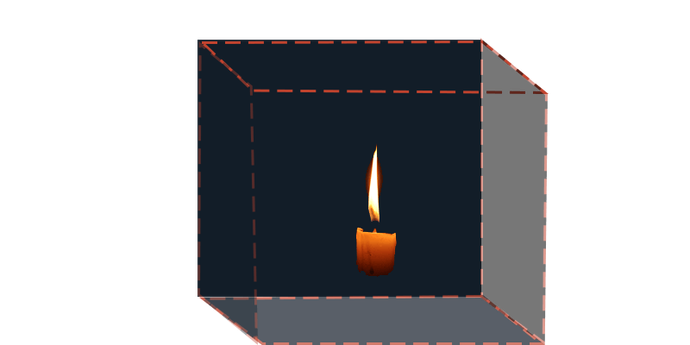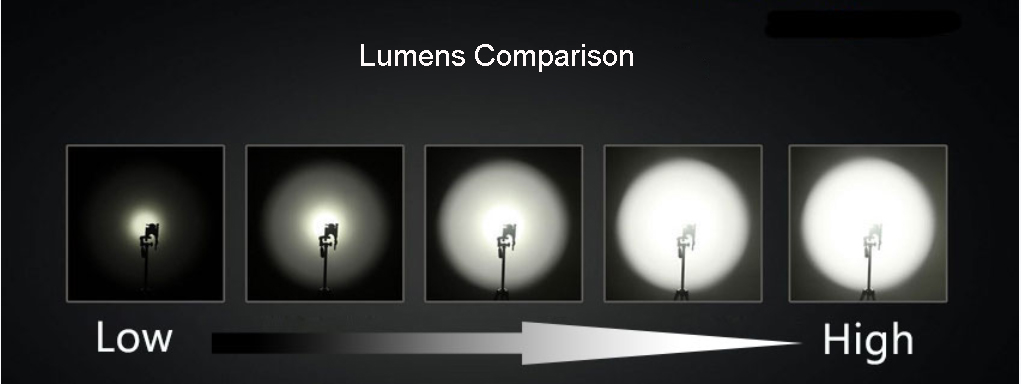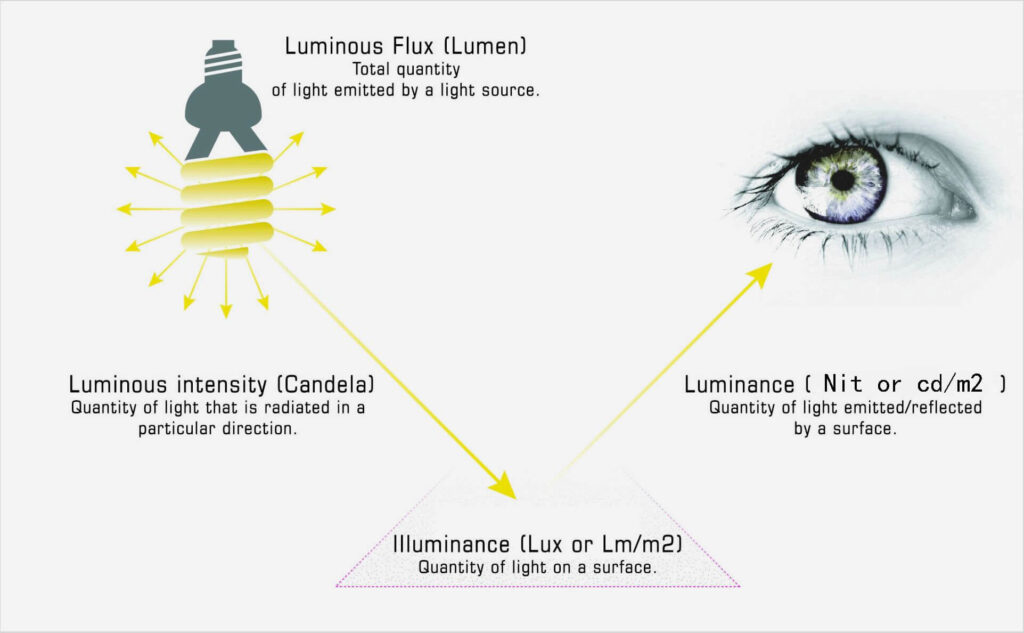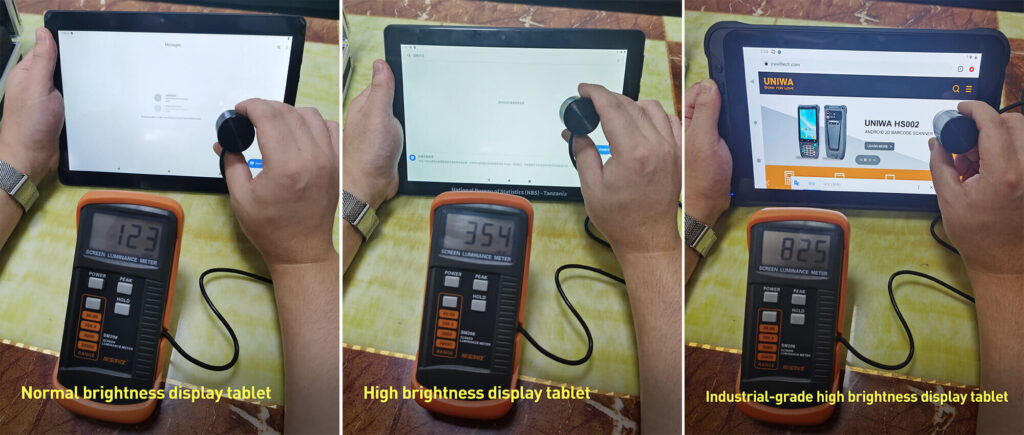Recent Blog
-
UNIWA will bring new models of handheld smart terminals to MWC Barcelona 2025. Our booth number is 7F21. Welcome to visit us!
2025-01-18 -
Welcome to visit our booth 5H26.From October 18th~21st 2023,UNIWA will participate in the Hong Kong Global Sources Electronics Fair
2023-09-19 -
Welcome to visit our booth 5J29. From April 18th~21st 2023, UNIWA will participate in the Hong Kong Global Sources Electronics Fair
2023-04-03 -
The Top 6 Android Barcode Scanners in 2023
2023-02-24
How To Measure The Screen Brightness? Nit? Lumens?
When purchasing a mobile phone or a tablet or some device with a screen, many buyers would evaluate various parameters of the device, one of which is brightness. However, on different devices marks with various units to measure brightness. What do they mean? What's the difference? And what can we learn about the display performance of the devices from these units? Let's find it out in this article.
What Is NIT?
A nit (nt) is a unit that represents the intensity of visible light. Nit is commonly used to describe the brightness of the device screen. The name nit is believed to have come from the Latin word "nitere", meaning "to shine". One nit is equal to one candela per square meter (1nt = 1 cd/m2).
Here is another term to explain-candela. The candela is the base unit of luminous intensity in the International System of Units (SI); that is, luminous power per unit solid angle emitted by a point light source in a particular direction. A common wax candle emits light with a luminous intensity of roughly one candela. If emission in some directions is blocked by an opaque barrier, the emission would still be approximately one candela in the directions that are not obscured. So the equation between nit and candela is:
- Candela = about the light from 1 candle
- Nit = the light from 1 candle per square meter
- More nits = more candles per square meter = brighter display

What Is Lumens?
The lumen (symbol: lm) is the SI derived unit of luminous flux, a measure of the total quantity of visible light emitted by a source per unit of time. Each lumen is about equal to the light output of a single candle. Essentially, a lumen is a measurement of brightness itself.

NIT VS. LUMENS
The fundamental difference between these two units is what exactly each of them measures. We just learned that lumens measure the output or “brightness” of a given light source. On the contrary, nits measure the intensity of visible light.
While a comparison between nits and lumens isn’t apples to apples, some correlations can be made to help you choose the lighting solution best for you (see the conversion below). In round terms, 1 nit is equal 3.5 lumens (3.426 to be more exact).
| Nits | Lumens |
| 100 | 342 |
| 200 | 685 |
| 500 | 1713 |
| 1000 | 3426 |
| 2000 | 6852 |

Screen Brightness of Rugged Handheld Terminals
In the field of rugged handheld terminals, including rugged tablet PC, barcode scanner and walkie talkie, the general screen brightness is roughly divided into the following categories:
200~400 nits: There is basically no problem to use the device outdoors in the sun, but if in the big sun at noon it may need to be shaded, otherwise it will be difficult to read because of reflection. Our rugged tablet PCs, such as WinPad W86H, WinPad W107, WinPad W101, fall within this range.
400 ~700 nits: Except for July and August when the sunlight is particularly strong, there is basically no problem with general outdoor operations. Products like UNIWA T11 PRO, QCOM P888 are in this scope.
700 nits or more: Even if the sunlight is particularly strong in July and August, devices' screen at such a level of brightness can be operated smoothly. Our rugged tablet Windows W15H can provide 1000-nit brightness which has reached this industrial-grade high brightness.

Is The Brighter The Screen, The Better?
The answer is it depends.
When you purchase some handheld terminals, let's say rugged tablets, you need to rate the device’s usability based on your pre-defined viewability range versus focusing solely on the maximum brightness setting.
A rugged tablet may be able to go up to 1,000 or 1,200 nits which is necessary for those who work in direct sunlight, but may be unnecessary for workers, such as warehouse operators or room cleaners, who spend all day in a dimly-lit building or a dark room. They may never need more than 300 or 400 nits.
So, if you are evaluating two different rugged tablets for using in a warehouse– one with a 500 nit display and one with a 1,000 nit display – and they are otherwise equally rugged and identically equipped from a security, safety, connectivity, input/output (I/O), handling, mounting and data input perspective, then the 500 nit configuration will be more than sufficient for this indoor-only application.
Conclusion
Having a usable device with proper brightness in any condition is something that we strives for with our devices. If you find yourself in the market for a rugged devices to do your fieldwork, then reach out to us. We can provide the optimal solutions for you. With years of feedback from customers, we're confident that our devices will fit your needs.
Describe Your Needs In Detail!
We will carefully evaluate your needs and give professional solutions.
